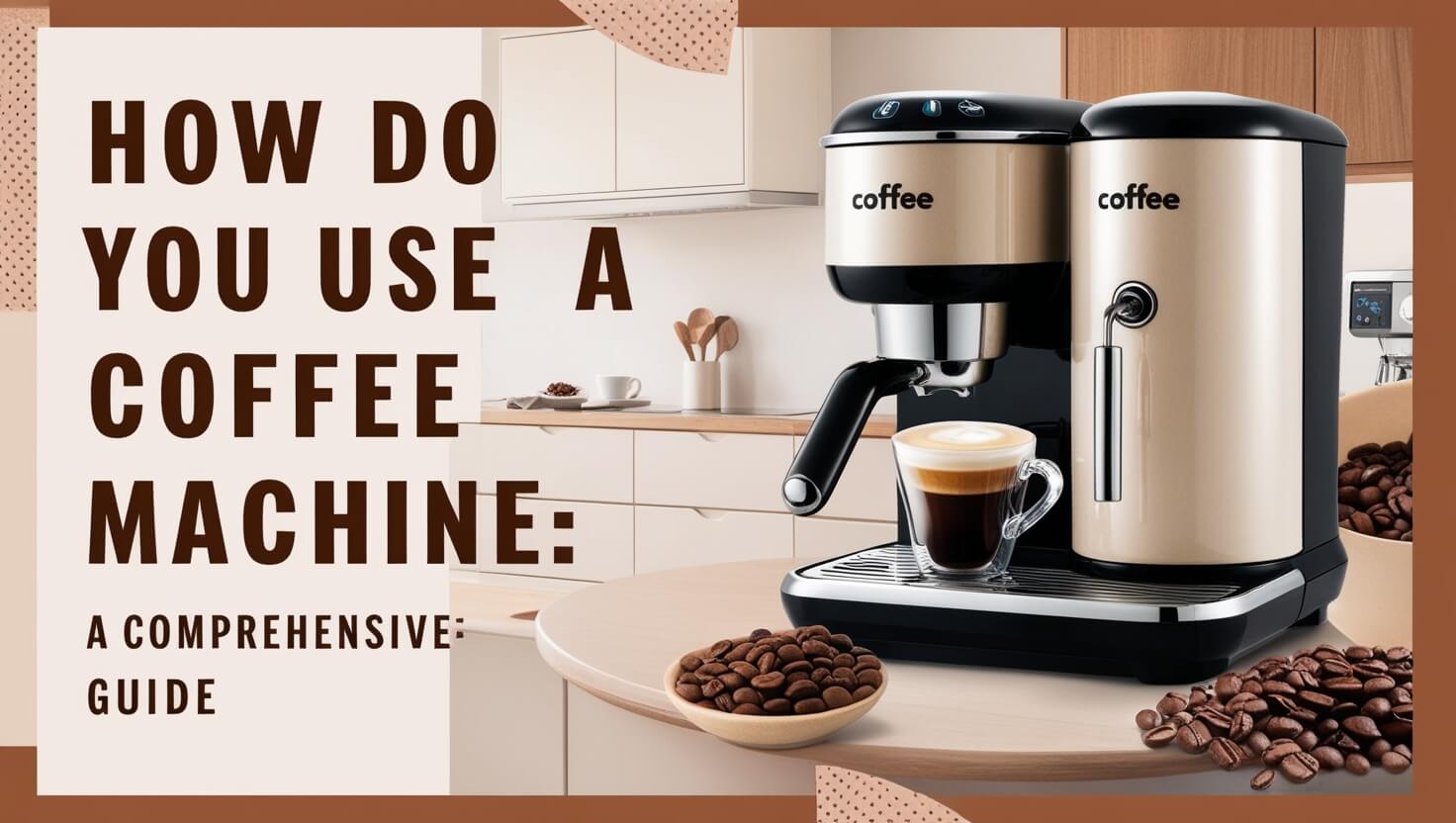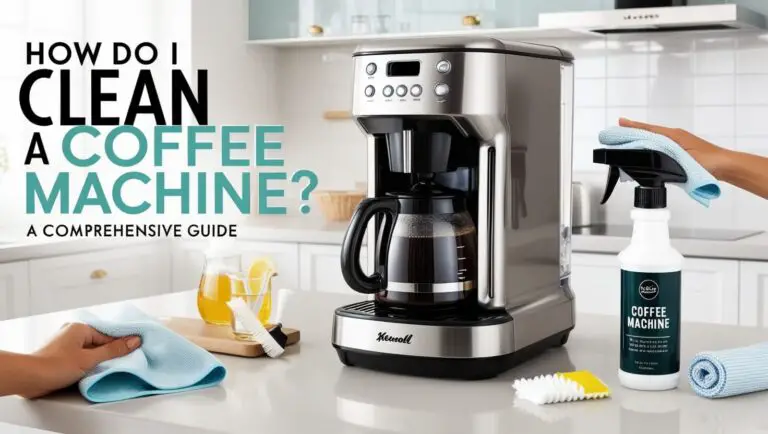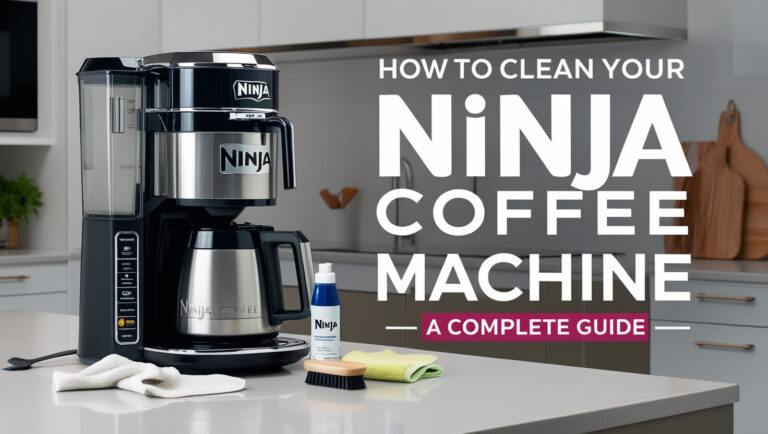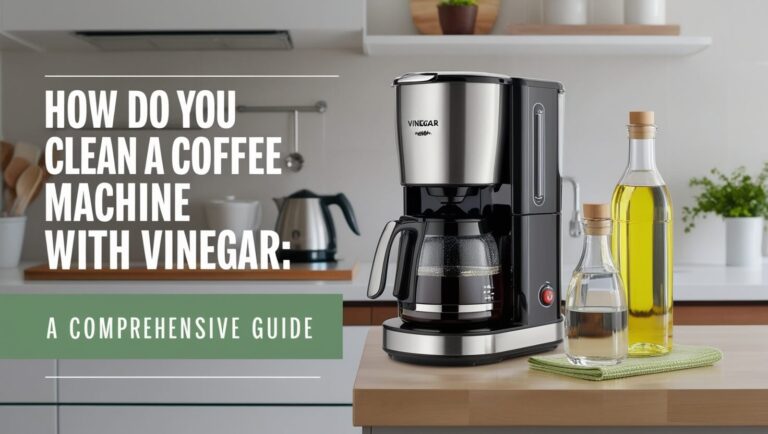How Do You Use a Coffee Machine: A Comprehensive Guide

Are you ready to embark on a journey to coffee perfection? Learning how to use a coffee machine is your first step towards brewing barista-quality drinks at home. Whether you’re a coffee novice or looking to refine your skills.
This guide will walk you through everything you need to know about operating various types of coffee machines. From basic drip brewers to advanced espresso makers, we’ll cover it all. So grab your favorite mug and let’s dive into the world of home-brewed coffee!
Understanding Different Types of Coffee Machines
Before we delve into the specifics of how to use a coffee machine, it’s crucial to understand that not all coffee makers are created equal. Each type has its unique features and brewing methods. Let’s explore the most common types you’re likely to encounter:
Drip Coffee Makers
Drip coffee makers are the workhorses of many kitchens. They’re simple to use and perfect for brewing large batches of coffee. Here’s a quick overview:
- Water is heated and dripped over ground coffee in a filter
- Brewed coffee collects in a carafe below
- Ideal for making multiple cups at once
Espresso Machines
For those who crave a stronger, more concentrated coffee experience, espresso machines are the way to go. They work by:
- Forcing hot water through finely-ground coffee under high pressure
- Producing a small amount of intensely flavored coffee with a layer of crema on top
- Allowing for the creation of various espresso-based drinks like lattes and cappuccinos
Single-Serve Pod Machines
These machines offer convenience and variety:
- Use pre-packaged coffee pods or capsules
- Brew one cup at a time
- Offer a wide range of coffee flavors and types
French Press
The French press is a manual brewing method that produces rich, full-bodied coffee:
- Ground coffee steeps directly in hot water
- A plunger with a metal mesh filter separates the grounds from the liquid
- Allows for more control over brewing time and strength
Pour-Over Devices
Pour-over brewing is a hands-on method favored by coffee enthusiasts:
- Hot water is manually poured over coffee grounds in a filter
- Offers precise control over the brewing process
- Known for producing clean, flavorful coffee
Now that we’ve covered the basics of different coffee machines, let’s move on to how you can prepare your coffee maker for use.
Preparing Your Coffee Machine for Use
Before you start brewing that perfect cup, it’s essential to set up your coffee machine correctly. This preparation stage is crucial regardless of the type of machine you’re using.
Unpacking and Initial Setup
When you first get your coffee machine:
- Carefully unpack all components
- Remove any protective packaging or stickers
- Read the manufacturer’s instructions thoroughly
- Assemble the machine according to the guide
Choosing the Right Location
Where you place your coffee machine matters:
- Select a stable, level surface
- Ensure there’s enough clearance above and around the machine
- Keep it away from heat sources and water splashes
- Make sure it’s near an electrical outlet
Water Considerations
The quality of water you use significantly impacts your coffee’s taste:
- Use filtered or bottled water if possible
- Avoid distilled water as it lacks minerals essential for good coffee
- If using tap water, let it run for a few seconds before filling the machine
With your coffee machine set up and ready to go, let’s explore how to use different types of coffee makers, starting with the popular drip coffee maker.
Basic Steps to Use a Drip Coffee Maker
Drip coffee makers are user-friendly and perfect for beginners. Here’s how to use one:
Adding Water to the Reservoir
- Locate the water reservoir (usually at the back or side of the machine)
- Open the lid and check for any “max fill” line
- Pour in cold, fresh water up to the desired level
- Close the lid securely
Inserting the Filter
- Open the brew basket (usually at the top front of the machine)
- Place a paper filter in the basket, ensuring it fits snugly
- Some machines have a permanent mesh filter – if so, make sure it’s clean and in place
Measuring and Adding Coffee Grounds
- Use about 2 tablespoons of ground coffee per 6 ounces of water
- Adjust the amount to your taste preference
- Spread the grounds evenly in the filter
Brewing Your Coffee
- Close the brew basket
- Place the carafe on the warming plate
- Turn on the machine and wait for the brewing cycle to complete
Serving and Enjoying
- Once brewing is finished, remove the carafe from the warming plate
- Pour and enjoy your freshly brewed coffee
- Turn off the machine if it doesn’t have an auto-shutoff feature
Now that we’ve covered the basics of drip coffee makers, let’s move on to the more complex world of espresso machines.
Mastering the Espresso Machine
Espresso machines can seem intimidating, but with practice, you’ll be pulling perfect shots in no time. Here’s how to use an espresso machine:
Priming the Machine
- Turn on the machine and let it warm up (usually takes 15-30 minutes)
- Run water through the group head to heat it up
- Purge the steam wand by releasing a burst of steam
Grinding and Dosing Coffee
- Use freshly roasted, espresso-grade coffee beans
- Grind the beans finely – it should feel like powder between your fingers
- Dose 18-21 grams of ground coffee into the portafilter
Tamping Techniques
- Level the grounds in the portafilter with your finger
- Place the portafilter on a flat surface
- Press down firmly with the tamper, applying about 30 pounds of pressure
- Give a slight twist at the end to polish the surface
Pulling the Perfect Shot
- Lock the portafilter into the group head
- Place a cup under the spouts
- Start the extraction – it should take 25-30 seconds for a 1-2 ounce shot
- Look for a golden-brown crema on top
Steaming Milk for Lattes and Cappuccinos
- Fill a metal pitcher 1/3 full with cold milk
- Purge the steam wand
- Submerge the wand just below the milk’s surface
- Create a whirlpool effect to incorporate air and heat the milk
- Stop when the pitcher is too hot to touch (about 150°F)
Espresso machines offer a world of possibilities, but they do require practice. Don’t get discouraged if your first few attempts aren’t perfect!
Navigating Single-Serve Pod Machines
Single-serve pod machines are all about convenience. Here’s how to use one:
Inserting the Pod
- Lift the machine’s lid or handle
- Place the coffee pod in the designated slot
- Close the lid, making sure it locks in place
Selecting Cup Size
- Most machines offer different cup size options
- Choose your desired size (usually ranging from 4 to 12 ounces)
- Place an appropriately sized mug under the dispenser
Brewing Options and Customization
- Some machines allow you to adjust brew strength
- Select any additional options (like temperature control)
- Press the brew button and wait for your coffee
Single-serve machines are great for quick, no-fuss coffee, but they may not offer the same depth of flavor as other methods. Let’s explore some manual brewing techniques next.
French Press Brewing Method
The French press is a classic method that produces rich, full-bodied coffee. Here’s how to use it:
Coffee-to-Water Ratio
- Use coarse ground coffee – about 2 tablespoons per 6 ounces of water
- Adjust the ratio to your taste preference
Steeping Time
- Add coffee grounds to the French press
- Pour hot water (just off the boil) over the grounds
- Stir gently to ensure all grounds are saturated
- Place the lid on top without pressing down the plunger
- Let it steep for 4 minutes
Plunging Technique
- After 4 minutes, slowly press the plunger down
- Apply steady, even pressure
- Stop when you feel resistance at the bottom
Pour and enjoy your French press coffee immediately for the best flavor.
Pour-Over Coffee Brewing
Pour-over brewing offers precise control over the coffee-making process. Here’s how to do it:
Choosing the Right Filter
- Use paper filters for a cleaner cup
- Opt for a metal filter if you prefer more oils in your coffee
Wetting the Filter
- Place the filter in the pour-over device
- Rinse it with hot water to remove any paper taste
- Discard the rinse water
Coffee Bloom Technique
- Add ground coffee to the filter (medium-fine grind)
- Pour a small amount of hot water over the grounds
- Let it sit for 30 seconds to allow the coffee to “bloom”
Pouring Patterns for Optimal Extraction
- Start pouring in the center, moving in concentric circles
- Keep the water level consistent
- Pour slowly and steadily, aiming to finish in about 3 minutes
Pour-over brewing requires practice but can produce an excellent cup of coffee.
Tips for Brewing the Perfect Cup
No matter which method you choose, these tips will help you make better coffee:
Importance of Water Quality
- Use filtered water for the best taste
- Avoid distilled water as it lacks minerals that enhance coffee flavor
Choosing the Right Coffee Beans
- Buy whole beans and grind them just before brewing
- Experiment with different roasts and origins to find your favorite
Proper Coffee Storage
- Store beans in an airtight container
- Keep them in a cool, dark place
- Avoid refrigerating or freezing coffee beans
Grind Size and Its Impact
- Adjust grind size based on your brewing method
- Finer grinds for espresso, coarser for French press
- Consistent grind size is key for even extraction
Cleaning and Maintaining Your Coffee Machine
Regular cleaning is crucial for great-tasting coffee and a long-lasting machine:
Daily Cleaning Routines
- Rinse removable parts after each use
- Wipe down the exterior and warming plate
- Empty and clean the drip tray
Deep Cleaning and Descaling
- Descale your machine every 3-6 months
- Use a mixture of water and white vinegar or a commercial descaling solution
- Follow the manufacturer’s instructions for your specific machine
Replacing Parts and Filters
- Change water filters as recommended (usually every 2-3 months)
- Replace gaskets and seals in espresso machines when they show wear
- Clean or replace reusable filters regularly
Troubleshooting Common Coffee Machine Issues
Even with proper care, you might encounter some problems. Here’s how to address them:
Weak or Bitter Coffee
- Adjust your coffee-to-water ratio
- Check your grind size
- Ensure water is at the right temperature
Machine Not Heating Properly
- Check if it’s plugged in and turned on
- Look for any tripped circuit breakers
- Consider professional repair if the issue persists
Leaks and Overflows
- Ensure all parts are properly assembled
- Check for cracks in the carafe or water reservoir
- Clean any clogged valves or tubes
Strange Noises During Operation
- Listen for unusual grinding or pumping sounds
- Check for any loose parts
- Descale the machine if you hear excessive noise
Exploring Advanced Coffee Making Techniques
Once you’ve mastered the basics, try these advanced techniques:
Experimenting with Brew Ratios
- Try different coffee-to-water ratios to find your perfect strength
- Keep notes on what works best for different coffee origins
Temperature Control for Different Coffee Types
- Lighter roasts often benefit from slightly higher brewing temperatures
- Darker roasts may taste better with slightly cooler water
Creating Latte Art
- Practice steaming milk to the right consistency
- Start with simple designs like hearts and work your way up to more complex patterns
Eco-Friendly Coffee Machine Usage
Make your coffee habit more sustainable with these tips:
Energy-Saving Tips
- Use a machine with an auto-shutoff feature
- Unplug your machine when not in use
- Consider manual brewing methods for less energy consumption
Reducing Waste from Coffee Making
- Use reusable filters when possible
- Compost coffee grounds
- Opt for biodegradable coffee pods if using a single-serve machine
Sustainable Coffee Machine Options
- Look for machines made from recyclable materials
- Choose energy-efficient models
- Consider manual brewing methods for the lowest environmental impact
In Closing
Learning how to use a coffee machine is just the beginning of your coffee journey. With practice and experimentation, you’ll soon be brewing café-quality coffee in the comfort of your own home. Remember, the perfect cup of coffee is the one that tastes best to you, so don’t be afraid to adjust and customize your brewing process.
Whether you’re using a simple drip coffee maker or a complex espresso machine, the key is to start with quality ingredients, maintain your equipment, and pay attention to the details of your brewing process. With time, you’ll develop a deeper appreciation for the art and science of coffee making.
So, the next time someone asks, “How do you use a coffee machine?” you’ll be ready with a wealth of knowledge and experience. Happy brewing!






